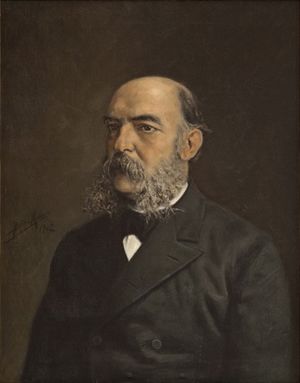José Amador de los Ríos facts for kids
José Amador de los Ríos y Serrano (born April 30, 1818 – died February 17, 1878) was an important Spanish thinker. He was mostly known as a historian and archaeologist. He studied the history of both art and literature. He graduated from the Complutense University of Madrid with a degree in history.
Contents
Early Life and Career
José Amador de los Ríos was born in 1818. He became a secretary for the Central Commission of Monuments in 1844. This group worked to protect important historical buildings.
He also helped lead a short-lived magazine called Boletín Español de Arquitectura. This was the first Spanish magazine just about architecture. It was published from June to December 1846.
In 1852, he published all the works of Íñigo López de Mendoza. This was a big achievement.
Contributions to Art and Literature
José Amador de los Ríos made a lasting mark on history. In 1859, he was the first to use the word mudejarismo. This term describes a special style of architectural decoration. It blends Christian and Islamic art styles in Spain.
His Major Work: History of Spanish Literature
In 1861, he published the first part of his most famous work. It was called Historia crítica de la literatura española. This was the first complete history of Spanish literature written in Spain. Sadly, he never finished the whole series.
Amador de los Ríos believed Spain was a united country. He saw it as both Roman Catholic and Castilian. He thought Spain's past was connected by a "luminous idea." This idea showed Spain's unique spirit.
He also defended Spanish literature. Some foreign historians thought medieval Spain was not important. But Amador de los Ríos showed that Spanish literature was among the best after the Fall of Rome.
Including All Spanish Literature
Even though his book only covered the Middle Ages, he included literature from Spanish America. He believed it was part of the larger Spanish tradition.
In another book, Historia social, política y religiosa de los judíos de España, he included Jewish literature from Spain. He felt it "bloomed" on Spanish soil. This showed his broad view of Spanish culture.
See also
 In Spanish: José Amador de los Ríos para niños
In Spanish: José Amador de los Ríos para niños


